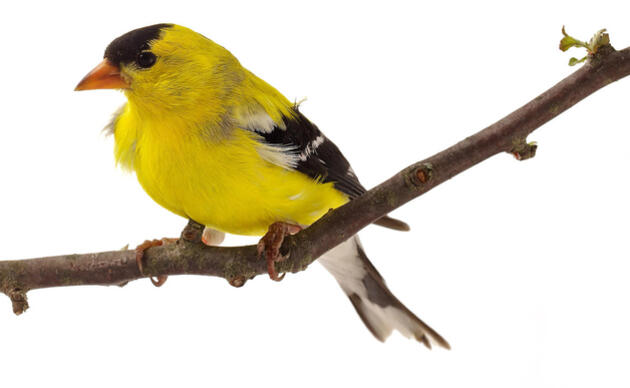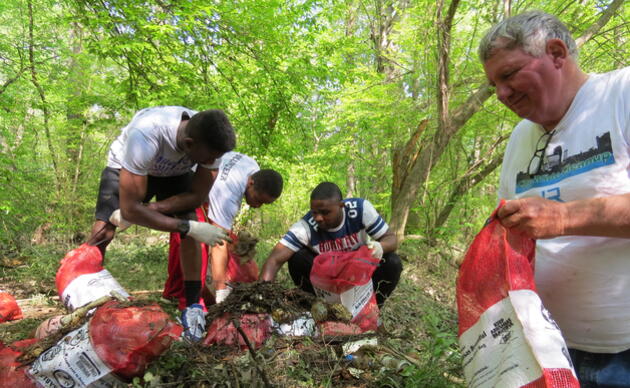February 12, 2019 (MOSS POINT, Miss.) – “The challenges are huge, but we have an enormous opportunity to save much of the Gulf Coast for both birds and people. We can’t afford to blow this." said David Yarnold, President and CEO of National Audubon Society (@david_yarnold) after the release of an extensive report, Audubon’s Vision: Restoring the Gulf of Mexico for Birds and People. The report highlights projects and programs critical to help the region and its wildlife recover from devastating hurricanes, oil spills and other environmental and man-made disasters. At the center of the largest ecosystem restoration effort ever attempted, Audubon recommends an investment of more than $1.7 billion in restoration and conservation efforts.
Audubon Mississippi, the state office of the National Audubon Society, identified critical priorities in the state to confront challenges facing birds and their habitats. In Mississippi, impacts from the 2010 Deepwater Horizon oil spill to coastal bird species have been compounded by a number of challenges, including loss of habitat, reduced water quality, erosion, predation, and human disturbance.
According to Sarah Pacyna, Program Manager for Audubon Mississippi’s Coastal Bird Stewardship program, “Birds are a strong indicator of the overall health of our ecosystem here in Mississippi and across the Gulf. If we address the needs of birds in Mississippi, we will also benefit people by providing restored beaches for storm surge protection, clean water for drinking, and a healthy environment to boost tourism and recreational opportunities.”
The BP Deepwater Horizon oil spill of 2010, which resulted in a global settlement of $20.8 billion in claims and cleanup efforts, has left a devastating mark on Mississippi and the entire Gulf Coast. Audubon recommends 16 state-based, 10 region-wide and four open ocean projects, which together total more than 136,000 acres of restored or protected habitat for bird and human communities from south Texas to the Florida Keys.
“We are excited that these projects complement on-the-ground restoration investments the State of Mississippi has already made to further aid our coast and wildlife,” noted Jill Mastrototaro, Policy Director for Audubon Mississippi. “Our vast network of partners and committed volunteers remain key ingredients to achieve this bold roadmap to benefit coastal Mississippi for this and future generations.”
Audubon supports the State of Mississippi’s restoration efforts, including acquisition of key habitats, habitat protection, water-quality improvements, and watershed protection. Audubon proposes projects that will leverage Mississippi’s restoration efforts through expanded research, restoration planning, improved beach management, and enhancing stewardship programs. In total, Audubon Mississippi is recommending a $2.55 million-dollar investment in projects in the state that will identify and protect habitat to benefit Black Skimmers and Piping Plovers. Additionally, the state office is recommending an annual investment of $15 million to continue a Gulf-wide coastal stewardship program, and it will leverage its ongoing efforts monitoring Black Skimmers to develop and implement a regional conservation strategy for the species.
“Never before has this amount of funding been dedicated to ecosystem restoration, therefore, we have an unprecedented opportunity to help the Gulf recover,” said Director of Gulf Coast Restoration at National Audubon Society, Kara Lankford. “Wildlife and people living along the coast are dependent on millions of acres of habitat that is at extreme risk unless we act boldly.”
Audubon’s Vision: Restoring the Gulf of Mexico for Birds and People identifies 8.1 million acres of highly suitable habitat across the Gulf for Audubon’s flagship species. The report highlights 30 projects that will collectively address the recovery and population health of these birds as Audubon continues to determine how sea level rise will affect the Gulf and identify ways to better support these species.
“As we move forward with the largest ecosystem restoration effort ever undertaken, it's enormously helpful to have access to this kind of information and thinking,” said Ben Scaggs, executive director at Gulf Coast Ecosystem Restoration Council. “It’s evident that Audubon clearly understands the inextricable link between and among varying species - including our own.”
With deep roots and a sustained presence on the Gulf, Audubon is working to secure a brighter future for the bird and human communities of this vital region. Implementing priority projects and programs focusing on restoration, conservation, research and stewardship, the National Audubon Society addresses the recovery and population health of the 11 flagship species. For a full project list and details or to learn more and get involved, visit www.Audubon.org/gulf.
About Audubon The National Audubon Society protects birds and the places they need, today and tomorrow, throughout the Americas using science, advocacy, education and on-the-ground conservation. Audubon's state programs, nature centers, chapters and partners have an unparalleled wingspan that reaches millions of people each year to inform, inspire and unite diverse communities in conservation action. Since 1905, Audubon's vision has been a world in which people and wildlife thrive. Audubon is a nonprofit conservation organization. Learn more how to help at www.audubon.org and follow us on Twitter and Instagram at @audubonsociety.
###








